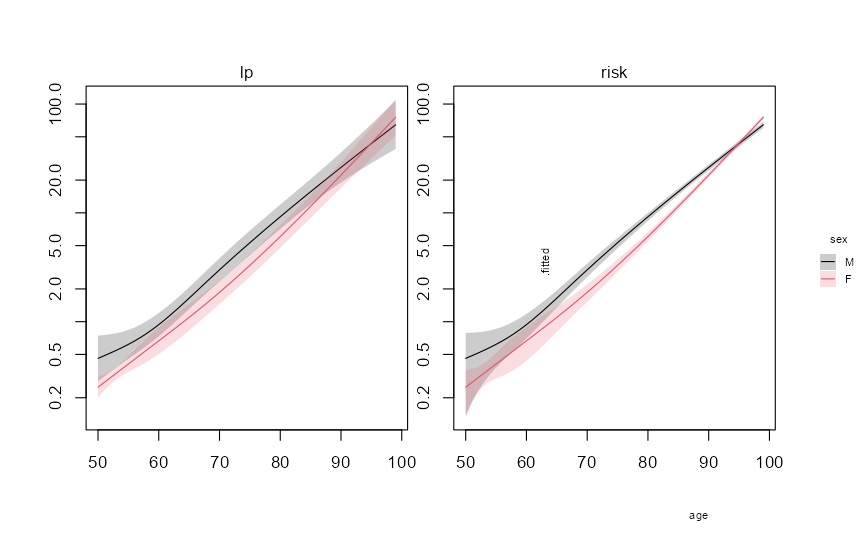Hi everyone,
I’m trying to replicate the plot of relative hazard over age by sex from this vignette from the survival package. However, I notice a difference in the confidence intervals (CIs) around the relative hazard estimates depending on how I compute them.
Specifically, I obtain different CIs when using:
type = "lp"inpredict(), then computing the 95% CI from the standard error (SE) and exponentiating the results (as done in the vignette).type = "risk"inpredict(), then computing the 95% CI directly from the SE.
The confidence interval is narrower in the second case.
According to the help file of predict.coxph, "risk" is simply exp(lp), so I would have expected the two approaches to yield the same results.
Does anyone have an idea why they differ?
Thanks in advance for your insights!

library(survival)
library(dplyr)
library(tinyplot)
fit <- coxph(Surv(futime, death) ~ sex * splines::ns(age, df =3), data = flchain)
pdata <- expand.grid(age = 50:99, sex = c("M", "F"))
lp_pred <- broom::augment(fit, newdata = pdata, type.predict = "lp", se = TRUE) |>
mutate(
type = "lp",
conf.low = .fitted - 1.96 * .se.fit,
conf.high = .fitted + 1.96 * .se.fit,
across(c(.fitted, conf.low, conf.high), exp)
)
risk_pred <- broom::augment(
fit, newdata = pdata, type.predict = "risk", se = TRUE
) |>
mutate(
type = "risk",
conf.low = .fitted - 1.96 * .se.fit,
conf.high = .fitted + 1.96 * .se.fit
)
pred <- rbind(lp_pred, risk_pred)
with(
pred,
tinyplot(
x = age, y = .fitted, ymin = conf.low, ymax = conf.high, by = sex,
facet = type, type = "ribbon", log = "y"
)
)